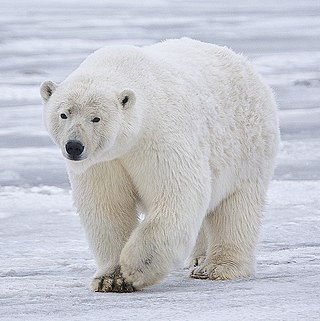
The polar bear is a large bear native to the Arctic and nearby areas. It is closely related to the brown bear, and the two species can interbreed. The polar bear is the largest extant species of bear and land carnivore, with adult males weighing 300–800 kg (660–1,760 lb). The species is sexually dimorphic, as adult females are much smaller. The polar bear is white- or yellowish-furred with black skin and a thick layer of fat. It is more slender than the brown bear, with a narrower skull, longer neck and lower shoulder hump. Its teeth are sharper and more adapted to cutting meat. The paws are large and allow the bear to walk on ice and paddle in the water.

Captain Matthew Webb was an English seaman, swimmer and stuntman who became the first person to swim the English Channel without the use of artificial aids. Webb increased the popularity of swimming in England.

Open water swimming is a swimming discipline which takes place in outdoor bodies of water such as open oceans, lakes, and rivers. Competitive open water swimming is governed by the International Swimming Federation, World Aquatics, except when it is part of multi-sport events, which are governed by the World Triathlon.
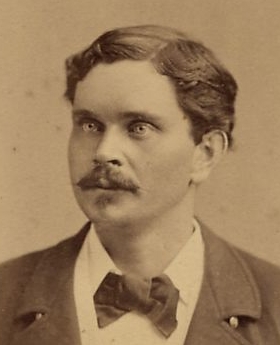
Paul Boyton, known as the Fearless Frogman, was a showman and adventurer some credit as having spurred worldwide interest in water sports as a hobby, particularly open-water swimming. Boyton is best known for his water stunts that captivated the world, including crossing the English Channel in a novel rubber suit that functioned similarly to a kayak. As the founder of Sea Lion Park in 1895, Boyton is also known as the originator of the first modern amusement park with a fenced-in enclosure and admission charged at the gate.
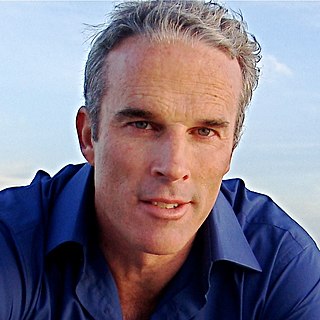
Lewis William Gordon Pugh, OIG, is a British-South African endurance swimmer and ocean advocate. Dubbed the "Sir Edmund Hillary of swimming", he is the first person to complete a long-distance swim in every ocean of the world, and he frequently swims in vulnerable ecosystems to draw attention to their plight.
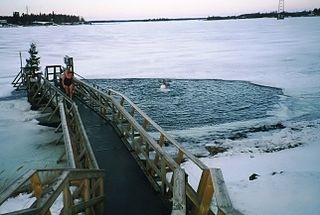
Winter swimming is the activity of swimming during the winter season, typically in outdoor locations or in unheated pools or lidos. In colder countries, it may be synonymous with ice swimming, when the water is frozen over. This requires either breaking the ice or entering where a spring prevents the formation of ice. It may also be simulated by a pool of water at 0 °C (32 °F), the temperature at which water freezes.

A polar bear plunge is an event held during the winter where participants enter a body of water despite the low temperature. In the United States, polar bear plunges are usually held to raise money for a charitable organization. In Canada, polar bear swims are usually held on New Year's Day to celebrate the new year.
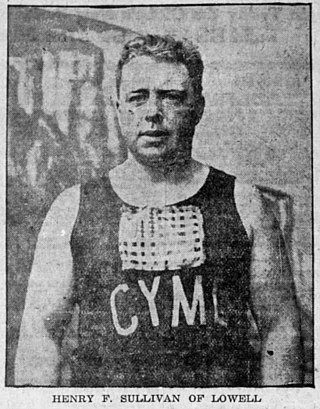
Henry Francis Sullivan was an American marathon swimmer who is best known for becoming the third person and the first American to swim across the English Channel, beginning his swim on the afternoon of August 5, 1923, from Dover, England, and finishing 26 hours and 50 minutes later on the evening of August 6 at Calais, France.

Enrique Tirabocchi was an Argentine marathon swimmer who in August 1923 became the fourth person to successfully swim across the English Channel. He was the first person to swim from France to England and finished the swim in 16 hours and 33 minutes, beating the record set by Matthew Webb when he was the first to make the crossing almost 50 years earlier.
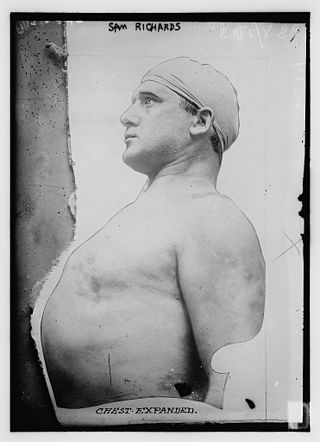
Samuel Richards of Boston, Massachusetts was a long distance swimmer. He won the Boston Light Swim in 1911 and in 1912. In 1913, he swam from the Charlestown Bridge to the Boston Light and back, a distance of about 24 miles.

Mercedes Carey was a British professional swimmer. She was the first known person to swim the Straits of Gibraltar and the first British woman to swim the English Channel. The name of Mercedes Gleitze was used to market Rolex's new waterproof case, the "Oyster". She established endurance records for swimming including a record of 46 hours in 1932. She was able to raise funds to found the Mercedes Gleitze Homes in Leicester via sponsorship. The Mercedes Gleitze charity is now linked to the Family Action charity.

The L Street Brownies are a polar bear club based in South Boston, Massachusetts. Organized in 1902, it is one of the oldest such clubs in the United States. Although the Brownies swim year round, they are best known for their annual New Year's Day plunge in Dorchester Bay.
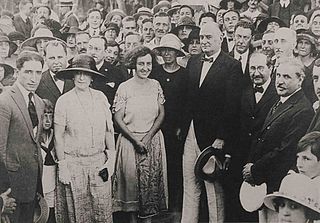
Lilian Gemma Harrison was an Argentine marathon swimmer, the first person to swim across the River Plate, the widest river in the world, on December 22, 1923; and a holder of the world record of endurance in the water. She was a pioneer of swimming in South America.

Montague Alfred Holbein was a British champion cyclist and swimmer. He is most known for his second place in the inaugural 1891 Bordeaux-Paris, that was won by his countryman George Pilkington Mills and for several attempts in the early 1900s to cross the English Channel swimming.

Jacques Amyot was a Canadian swimmer from Quebec. As a long distance swimmer, besides holding 50 records in Quebec and 15 in open water swimming in Canada, qualifying for the 1948 London Olympics, and crossing the English channel twice, he may be best known for winning the first 26 km Marathon race across Lac St. Jean on July 23, 1955 in eleven hours and 32 minutes. The race has continued and is now known as la Traversée internationale du lac St-Jean. As an honored guest, Amyot frequently attended the race and congratulated the winner until his death in 2018.

Ross Edgley is a British athlete, ultra-marathon sea swimmer and author. He holds multiple world records, but is perhaps most recognised for completing the World's Longest Staged Sea Swim in 2018, when he became the first person in history to swim 1,780 miles (2,860 km) around Great Britain, in 157 days In 2024, he also became the first person in history to simultaneously hold official Guinness World Records for long-distance swimming in the sea and river when he broke the record for the longest non-stop, continuous river swim down the Yukon River.
Sarah Thomas is an American marathon swimmer. She is the first person to complete four consecutive crossings of the English Channel and the first person to swim a current-neutral swim over 100 miles. She holds the world record for longest, second-, and third-longest current-neutral swims, and various other records in both fresh and salt water categories.
Hassan Baraka is a Moroccan open water swimmer.

Edmund Caunce Nowell 'Ted' Heaton was a British diver and swimming instructor born in Liverpool, England. He is notable for his small tank diving displays during the late 19th century and for his several unsuccessful attempts to swim the English Channel during the early 20th century. Having begun training to swim the channel in 1893, he made a total of seven attempts. He often came within several miles of the French coast, with the closest being in August 1909 when he came within 2 miles (3.2 km). His swimming efforts earned him a role as a superintendent of his local swimming baths and a salary of £120 a year which also included accommodation and energy provision.
















